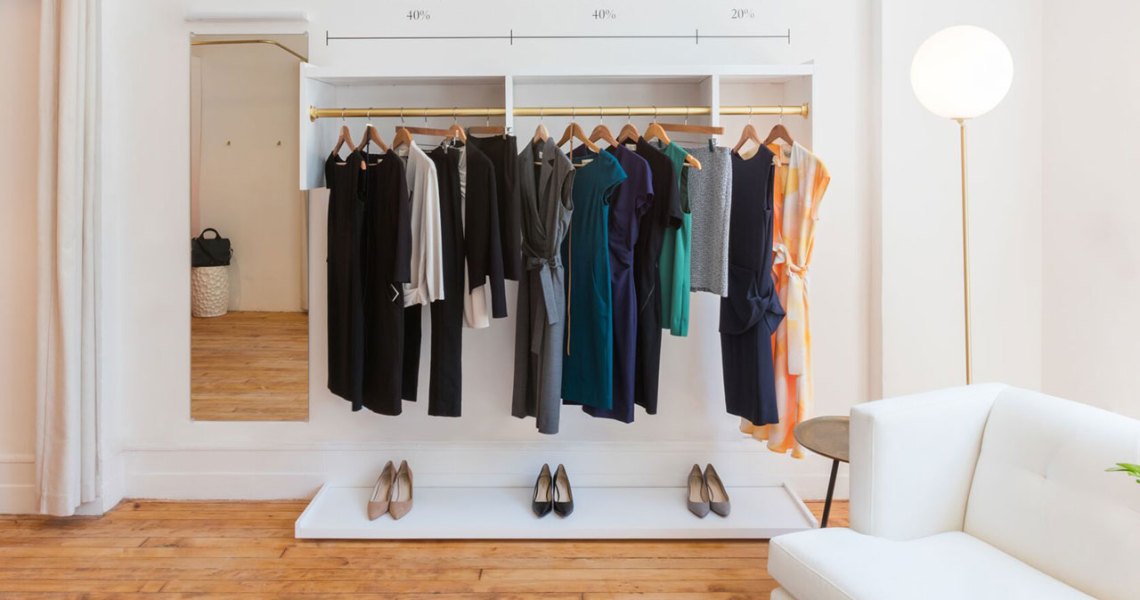In fashion retail, the lines between temporary and permanent are becoming increasingly blurry, as brands opt for shorter, month-to-month leases with no set end date and often transition temporary stores into permanent locations.
Instead of opting for either a temporary store with a fixed end date or a permanent store with a recurring lease, fashion brands are opening stores that are somewhere in between. They’re planned for a few weeks, for example, but end up staying open for months, years or indefinitely.
“When we open a new space, it’s permanent in the sense that we know we want to be in that market,” said Katie Twidwell, senior director of operations and sales at fashion brand M.M.LaFleur. “But it’s otherwise temporary. The exact location, the inventory, the concept — it all can change. That’s important to us when we look at leases. Traditionally, retail leases are very long, but we try to shy away from that.”
Alice Ratcliffe, head of brand at Appear Here, a company that helps brands set up flexible retail spaces, said both brands and the landlords that rent to them are moving toward shorter and more flexible leases. Smaller, digitally native brands don’t always have the resources to shell out for a five-year retail lease and landlords don’t want their retail spaces to sit empty. It’s helpful, Ratcliffe said, to think of the modern retail landscape as more akin to media.
“The landlords are definitely shifting this way, too,” Ratcliffe said. “Flexibility works for them. Simon Property [Group] mentioned in their annual report that they see their spaces as more like media platforms. They have 1 billion visitors a year, comparable to a TV network. For them, they are looking at brands as driving content and engagement. Imagine if you owned a TV channel and you didn’t sell ad space. You wouldn’t just have a blank screen; you’d fill every spot.”
According to a report from real estate information company CoStar, from 2007 to 2017, the average retail lease length for chain stores fell from six years to four-and-a-half years. Ratcliffe said, for DTC brands, it’s becoming even shorter. She estimated that for pop-ups, the average length is about eight weeks globally and only four weeks in New York. Twidwell said recently that landlords have been offering M.M.LaFleur shorter leases, and that the traditionally long retail lease is becoming less common.
Vacant retail spaces in New York City have doubled in the past year. If brands can’t pay high rent prices or commit to long lease lengths, landlords are often left with empty stores and no revenue.
Ad position: web_incontent_pos1
This shift is reflected in how some digitally native brands are thinking about pop-ups. When online dominates for actual revenue, brands have more room for their physical retail experiments to focus less on transactions and more on brand building.
“It was really low risk for us to try a pop-up experience without having to go full scale into a larger space,” said Melody Hernandez, vp at DTC perfume brand Boyfriend, which opened its first pop-up store earlier this year in preparation for a larger retail push in the future. “For us, it was more than anything a marketing play. You can think of the money we spent on the pop-up as ad spend.”
But this shift isn’t just restricted to smaller brands or brands that don’t have a lot of retail experience to begin with. Even a giant like Madewell, with dozens of stores around the country and in the midst of an IPO, said that testing a new retail concept with a low-risk, temporary lease and then transitioning it into something more long term is effective for the company. Joyce Lee, head of design at Madewell, said the brand’s men’s pop-up shop in Brooklyn, which opened Thursday, is technically set for a year, but Madewell is hoping to transition it into a permanent location if it proves successful.
“It takes a few months to get a good sense of whether a store will work,” Twidwell said. “When you first open, there’s a lot of buzz. It’s at least three months before you know for sure what a permanent store would look like in that spot. When we transitioned our Boston store from temporary to permanent, we had to close it for a few months to rebuild it. The aesthetics stayed the same, but a lot of the back-of-the-house inventory systems needed to be established.” For example, the company revamped how inventory was stored and sorted.
Twidwell said sometimes M.M.LaFleur will test a few different temporary stores in the same market, like the three stores it opened in Minneapolis in the past few years, before it settles on a final location.
Ad position: web_incontent_pos2
For smaller brands, the shift in how both the fashion world and the landlords it works with think about retail’s permanence is a boon toward their retail strategy. For many, this shift is opening doors that otherwise would have remained closed.
“The lines [between temporary and permanent retail] have definitely become blurred,” Ratcliffe said. “And that gives brands access to some prime retail spaces for an affordable amount. It breaks down the initial upfront costs. You could have a super small T-shirt brand run by a few people with a store in a premium location for a month. Looking at it like marketing, I wouldn’t say to people, ‘I want to run this ad for 20 years and pay for it in 10-year chunks.’ Instead, ‘I want to run it for as long as it works and pay for it as I go.’ It’s the same principle.”




